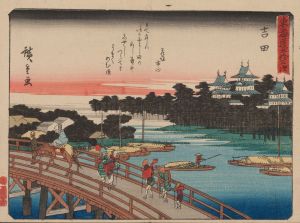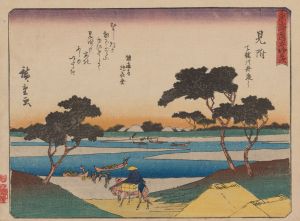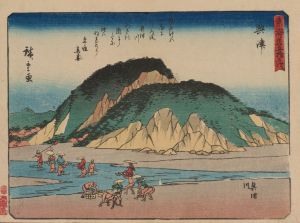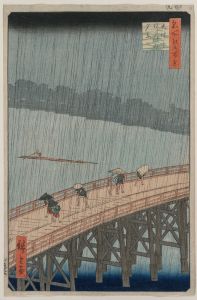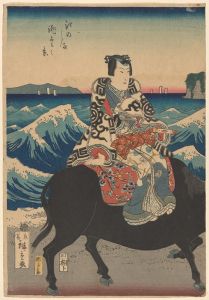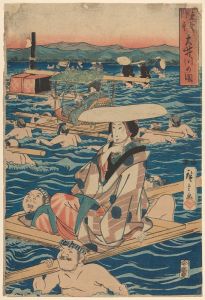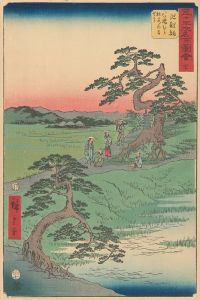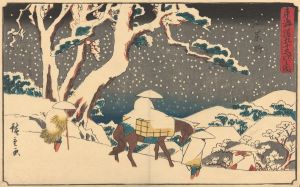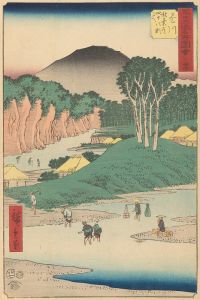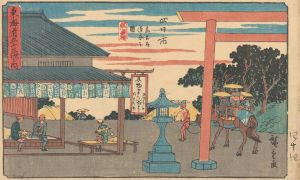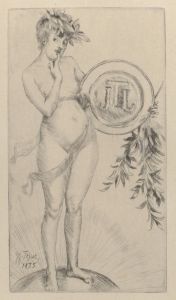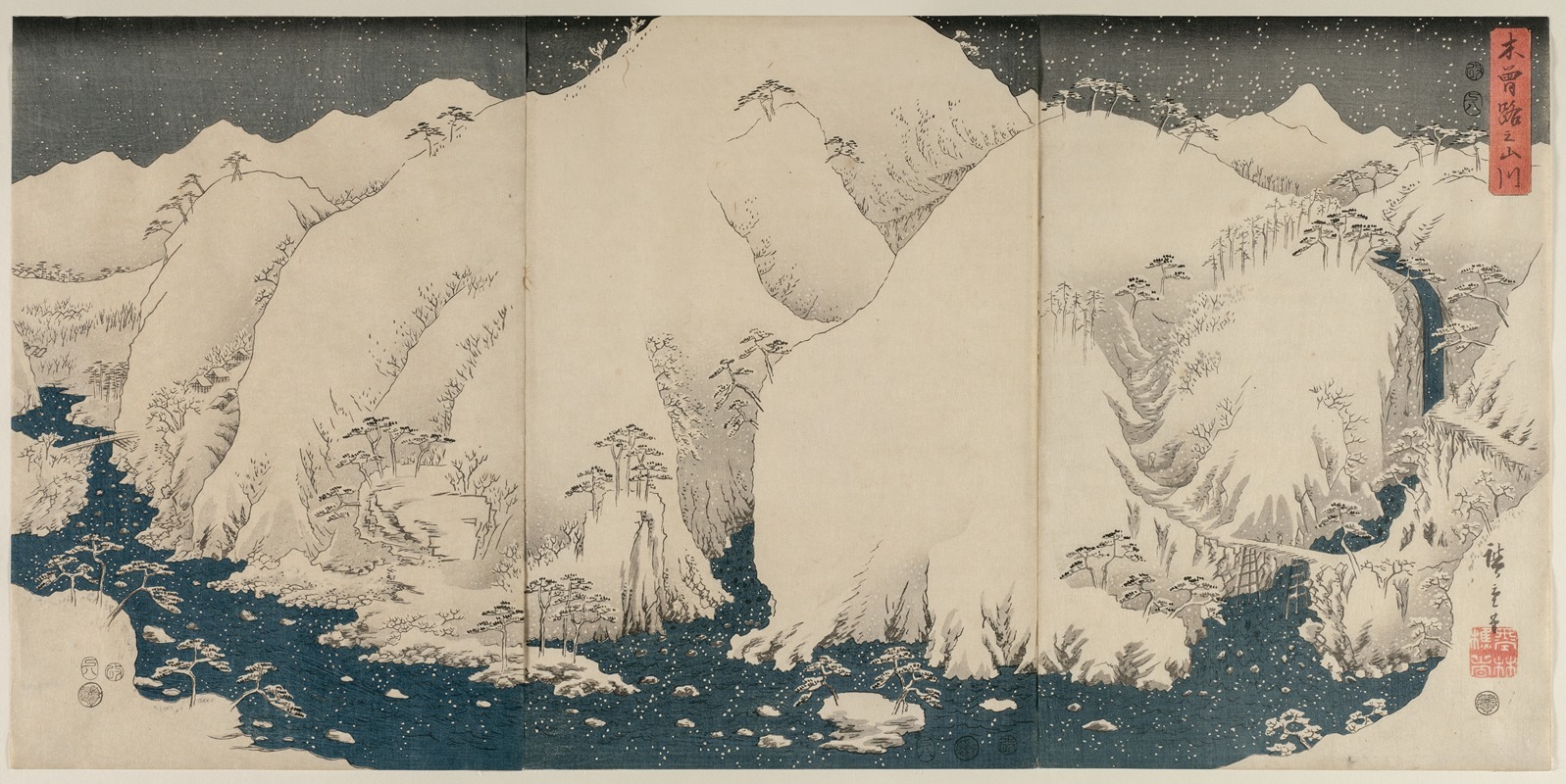
Mountain and River on the Kiso Road
A hand-painted replica of Andō Hiroshige’s masterpiece Mountain and River on the Kiso Road, meticulously crafted by professional artists to capture the true essence of the original. Each piece is created with museum-quality canvas and rare mineral pigments, carefully painted by experienced artists with delicate brushstrokes and rich, layered colors to perfectly recreate the texture of the original artwork. Unlike machine-printed reproductions, this hand-painted version brings the painting to life, infused with the artist’s emotions and skill in every stroke. Whether for personal collection or home decoration, it instantly elevates the artistic atmosphere of any space.
"Mountain and River on the Kiso Road" is a woodblock print by the renowned Japanese ukiyo-e artist Andō Hiroshige. Hiroshige, born in 1797 and deceased in 1858, was one of the last great masters of the ukiyo-e tradition, which flourished during the Edo period in Japan. His work is celebrated for its poetic and atmospheric depictions of landscapes and everyday life.
This particular print is part of Hiroshige's famous series "The Sixty-nine Stations of the Kiso Kaidō," which he created in collaboration with another artist, Keisai Eisen. The series illustrates the scenic journey along the Kiso Kaidō, also known as the Nakasendō, one of the five routes of the Edo period that connected Edo (modern-day Tokyo) with Kyoto. The Kiso Kaidō was known for its beautiful and varied landscapes, making it a popular subject for artists and travelers alike.
"Mountain and River on the Kiso Road" captures the serene and majestic beauty of the Japanese countryside. Hiroshige's composition typically features a harmonious blend of natural elements, such as mountains, rivers, and trees, often with travelers or local inhabitants depicted in the foreground. His use of perspective and color creates a sense of depth and movement, inviting viewers to imagine themselves within the scene.
Hiroshige's work is characterized by its attention to detail and ability to convey the transient beauty of nature. He often employed a technique known as bokashi, a method of color gradation that adds a sense of atmosphere and mood to his prints. This technique is evident in "Mountain and River on the Kiso Road," where the subtle gradations of color enhance the print's tranquil and contemplative quality.
The print reflects Hiroshige's deep appreciation for the natural world and his skill in capturing its essence. His landscapes are not merely representations of physical locations but are imbued with a sense of poetry and emotion. This approach resonated with the Japanese aesthetic principle of mono no aware, which emphasizes an awareness of the impermanence of things and a gentle sadness at their passing.
Hiroshige's work, including "Mountain and River on the Kiso Road," had a significant impact on the development of landscape art both in Japan and abroad. His prints were widely collected in Europe and influenced many Western artists, including the Impressionists, who admired his innovative use of perspective and color.
Today, Hiroshige's prints are highly valued for their artistic and historical significance. They offer a glimpse into the Edo period's cultural and geographical landscape, capturing the spirit of a time when travel was both an adventure and a means of connecting with the natural world. "Mountain and River on the Kiso Road" remains a testament to Hiroshige's mastery of the ukiyo-e art form and his enduring legacy as one of Japan's most beloved artists.





